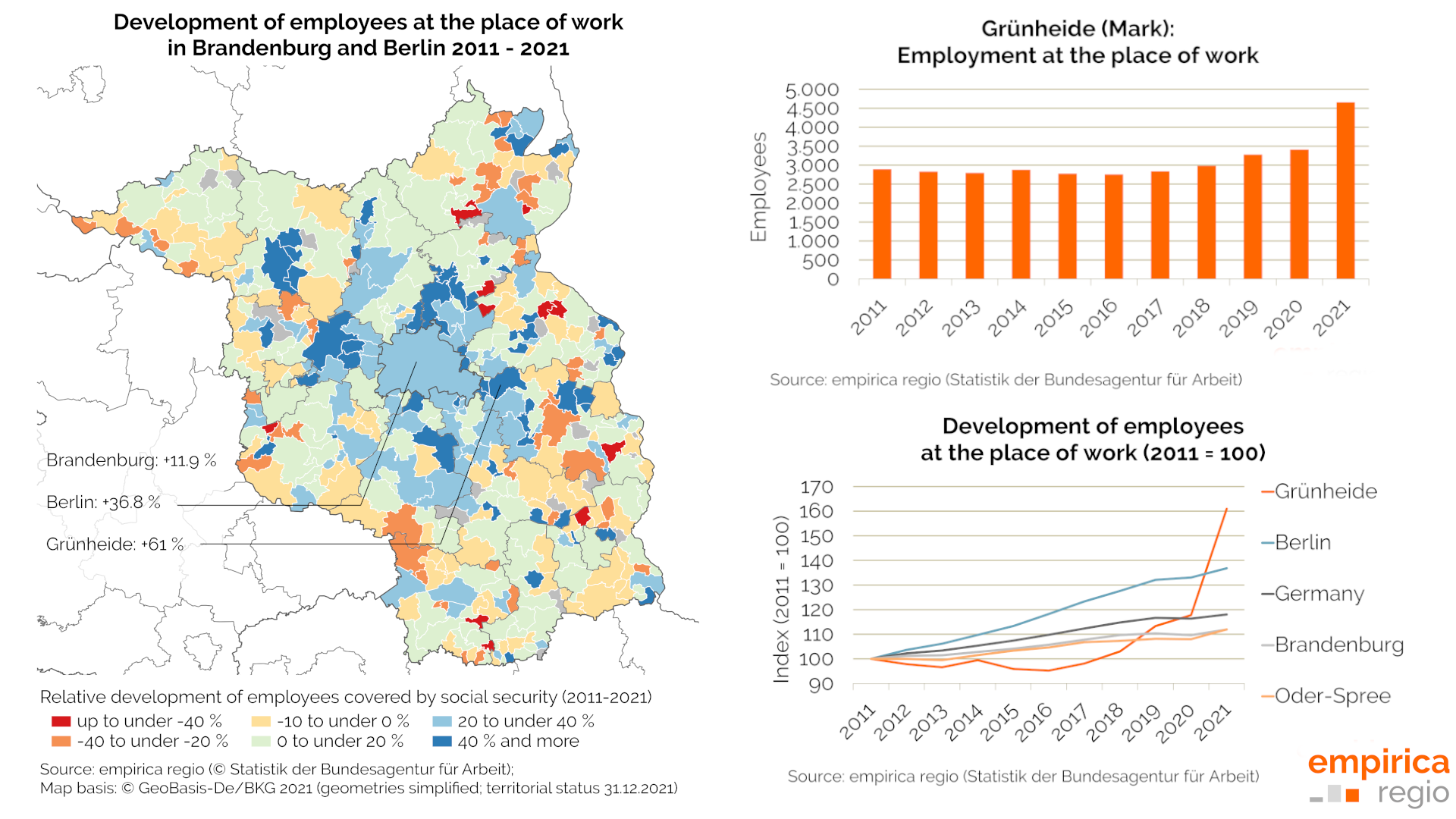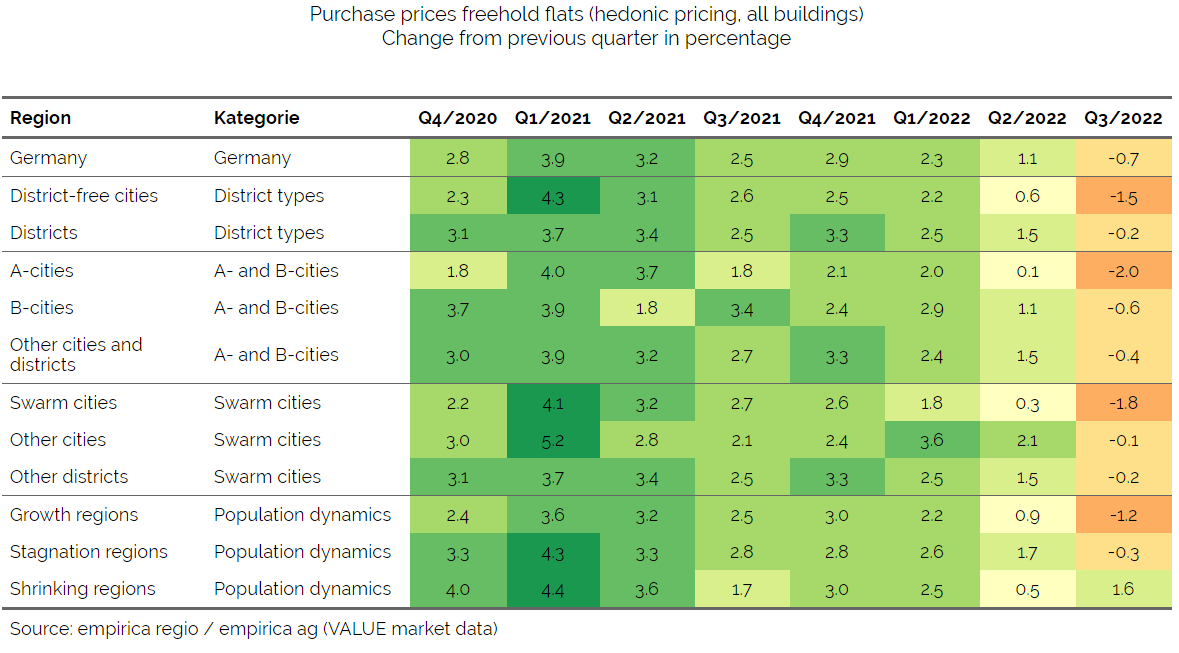Employment boost from Tesla in the Oder-Spree district - rents and purchase prices increased more strongly
Ever since Tesla chose Grünheide as the site for its fourth Gigafactory, it has been clear: the previously little-noticed region around the little speck-belt town of 8,000 inhabitants in the east of Berlin is now seen as one that will be boosted and transformed in many ways. Grünheide’s mayor described the Tesla settlement as “winning the lottery”.
For a long time, the Oder-Spree district was considered a shrinking region, which can be clearly proven: until 2013, the number of inhabitants declined, there is still a continuously increasing mortality surplus and a low economic power, the average age rose from 44 to 48 years within the last 15 years. But: in recent years the district has increasingly benefited from immigration from Berlin, albeit to a lesser extent than other districts in Brandenburg. The Tesla factory, however, will mean more jobs and in-migration. This will lead to far-reaching infrastructural changes and, above all, to an enormous demand for residential and commercial space in the region around Grünheide.
Berlin’s hinterland was already in the focus of investors before Tesla - but the east only to a limited extent
In view of up to 40,000 Tesla employees and potential supplier settlements in the long term, the effects will not only affect the Oder-Spree district. Berlin (the centre of Berlin-Köpenick is about 20 kilometres away) and other parts of the capital’s surrounding area will also experience changes due to the settlement of the world’s fourth Gigafactory. Even before the Tesla UFO landed, the sharp rise in prices in Berlin was one reason why the Berlin hinterland has been the focus of investors for several years. Only in eastern Berlin has this development been less noticeable. The Oder-Spree district is actually a sparsely populated, rural district. However, an increasing division of the district into the Berlin hinterland and the more remote south-east is now becoming apparent.
In March 2021, a state report by the Berlin and Brandenburg state governments on the development of the factory area concluded that an immense additional demand for housing could be expected, which could not be met with the available potential. According to this study, no housing bottlenecks have yet occurred for the first construction phase of the Gigafactory, but it seems certain that the real estate market will still be very much in flux as a result of Tesla. The signs are already showing.
What has the Tesla settlement already effected?
The groundbreaking ceremony took place in spring 2020, and the first electric cars rolled off the assembly line in November 2021. Tesla currently employs 1,800 people. For Grünheide’s Oder-Spree district, some changes can already be derived from the data and analysis tools of empirica regio:
-
In June 2021, the number of employees subject to social insurance contributions at the place of work in Grünheide was around 4,660, compared to 3,400 in June 2020. This will lead to a sharp increase in commuters; 87% of employees already commute to Grünheide from outside.
-
According to the empirica housing price index, the average rent per square metre in the Oder-Spree district was €8.83 in the fourth quarter of 2021. Compared with the same quarter of the previous year (4 /2020), rents have risen by 12.9%. This is the strongest relative increase in Brandenburg in this period.
-
The purchase price level for condominiums (all construction years) in the fourth quarter of 2021 is 3,430 euros per square metre. Compared to the same quarter of the previous year (4 /2020), purchase prices have risen by 13.9 per cent; compared to the fourth quarter of 2019, average purchase prices have almost doubled.
-
The housing market bubble risk - based on the analysis of increases in various indicators and not on the exceeding of absolute thresholds - is assessed by empirica regio as “rather high”. Most recently, the price-income sub-indicator in particular, which shows the relationship between purchase prices and average net income, had risen more strongly.
-
The western district of Dahme-Spreewald, the location of Berlin-Brandenburg Airport, was the district with the highest population growth in Brandenburg in 2020 (+1.5%). The neighbouring district of Märkisch-Oderland to the north grew by +0.7%. The Oder-Spree district, on the other hand, was in Brandenburg’s midfield with +0.3%.
Not until the migration data for 2021 will it be possible to tell whether an increased influx into the region has already begun. However, whether the new employees at Tesla also move to the Oder-Spree district or switch to neighbouring regions and Berlin will depend on the availability and affordability of housing.





